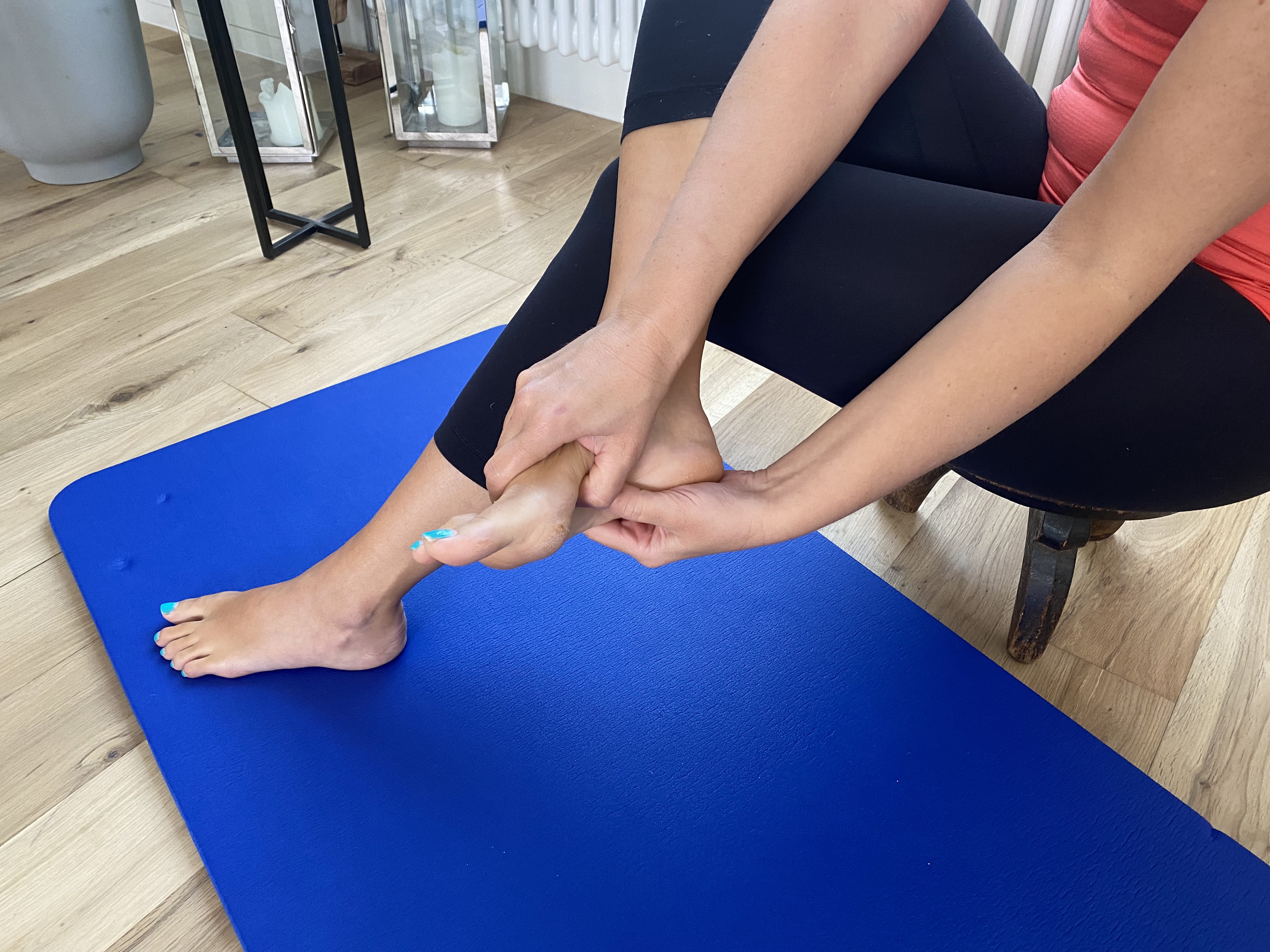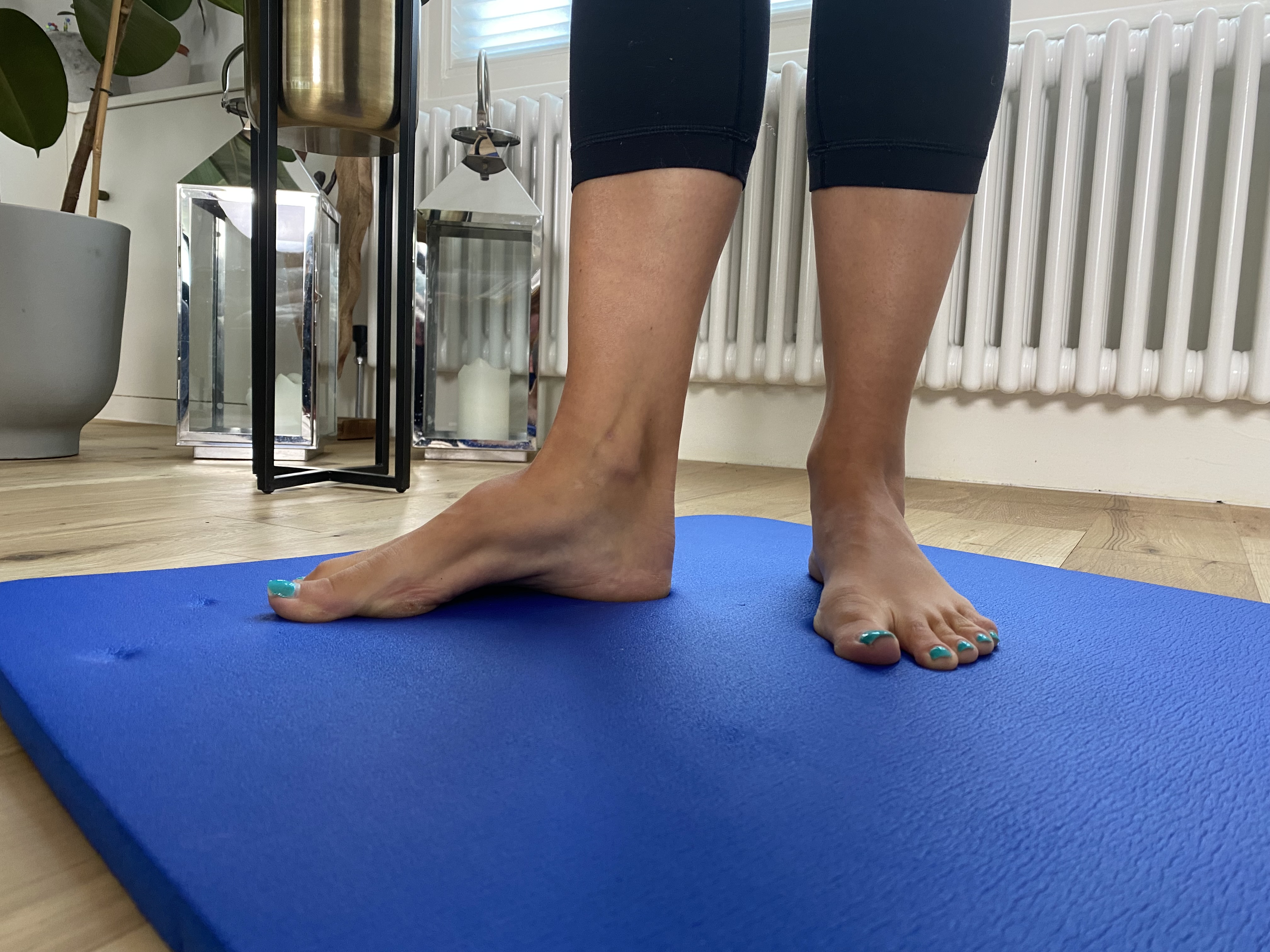The best Pilates exercises for triathletes to help strengthen feet and ankles
Many physiotherapists believe we should prioritise our feet as we would our teeth or eyes. Why? Because our feet give us stability, balance, grip and act as shock absorbers. Here are some key Pilates exercises to help strengthen our feet and ankles…

Our feet are pivotable for keeping us upright. They give us stability, balance, grip and act as shock absorbers to cushion every movement. Not only that, but on average we walk around 110,000 miles in our lifetime, which is four times the circumference of the globe!
Each foot, in each stride, takes around 1.5 times your body weight, and if you want to run, we’re talking more like 4-5 times! So here are some simple exercises we try and encourage triathletes to do to help strengthen their feet and ankles:
Plantarfascia rolling

You can do this in sitting or standing. The ball should have a bit of give in it so a golf ball is normally too hard. Ideally, you want something which is roughly a tennis ball size. Start at the front of your foot, just behind the ball of your feet and press down, rolling your foot forwards until you get to the heel pad. Make sure that you are covering the whole of the foot including the entire arch. To do this roll your foot inwards to get right onto the side.
Massage and touch your feet

Every time you have had a shower or bath, spend 30 seconds to one minute just massaging the bottom of the foot, touching and spreading the toes and working through the tops. This will help stimulate all the nerves and wake up the muscles in your foot, and also allow you time to check on your foot health – do you have any corns or calluses, verrucas or ingrowing toenails.
- Sports massage: What are the benefits of having a regular massage?
- Self-massage: how to treat your aches and pains
Toe yoga
Lift your big toes, keep the four toes down. Press the big toe down and lift the four toes. Spread your four toes as you put them down and lift the big toe. Spread your big toe as you press it down and lift the four toes.
- 4 yoga workouts that will improve your run
- 4 yoga workouts that’ll help your swim
- Yoga: What’s the best type for triathletes to do?
Lumbrical work

People often do this very badly. You will often see people using a tea towel or theraband on the floor and you have to slowly drag it towards you and scrunch it up. However, often this encourages the external muscles of your feet to work rather than the intrinsic lumbricals. If you have been given this and you notice that as you do it your toes are scrunching and curling, then these are not the right muscles!
Put your feet on the floor and spread your toes. You are then aiming to press the toes down and lift the joint at the ball of your foot (metatarsal heads). The arch of your foot should lift but the foot stay square to the floor and toes long.
These are the easiest exercises you can do which will give you some awareness but also mobility in your feet.
However, we all have our individual biases so if you notice that your toes are starting to move closer together, or the knuckles of your toes are bunching up then please get in touch with a physio who has a specialist interest in feet to get a full assessment and exercises specifically for you.
Why is Pilates so good for strengthening our feet?
Particularly in equipment Pilates, there are lots of exercises that you can do which really target your feet when you move. This includes reformer exercises such as footwork and jumping, cadillac (trapeze table) exercises such as parakeet (or its prep) and chair exercises such as Achilles stretch to name a few.
- Achilles tendon injuries: how they happen and how to prevent them
- What’s the difference between shin splints and stress fractures?
All these exercises can be modified to accommodate your needs but all will help the mobility in your foot.
The bars give you tactile feedback so you can feel whether you’re rolling in or out, and the mirrors allow you visual feedback so you can see if you are simply dropping into the end of your range when you are pointing your feet.
We can also easily position your feet on the bar so that you are in the optimum position for you. The important thing to realise is that they may not actually be parallel.
A lot of this depends on your anatomy and how your shin bone (tibia) and hips are naturally rotated. All of this can be taken into account but that means we can hone in and really strengthen the intrinsic muscles of your foot rather than using the bigger ones.
- How can Pilates improve your triathlon performance?
- What’s the difference between Pilates and yoga?
- Best yoga mat deals for stretching and strengthening
Top image: Getty Images
For more information, visit Complete Pilates.




